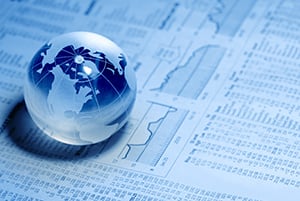 Australia has been one of the biggest beneficiaries of China’s growth in the past several decades. China’s infrastructure spending after the last two crises—the great financial crisis and the more recent COVID-19 pandemic—created a demand for resources that was largely fulfilled by Australia. Indeed, this demand helped alleviate some of the pain for the Australian economy.
Australia has been one of the biggest beneficiaries of China’s growth in the past several decades. China’s infrastructure spending after the last two crises—the great financial crisis and the more recent COVID-19 pandemic—created a demand for resources that was largely fulfilled by Australia. Indeed, this demand helped alleviate some of the pain for the Australian economy.
As we look past the COVID crisis and consider a world where at least the developed players are taking a more cautionary approach to China, Australia’s dependence on China may end up constricting its economic growth.
The Bickering Couple
Just when I was convinced that bookstores are an antiquated business model, I came across a quaint new neighborhood bookstore in the heart of Boston. I was even more delighted to see my 15-year-old literally jump with joy at the sight of the bookstore. So, in we went. We were greeted by tables full of classics, including many by one of my favorite authors, Jane Austen. I started browsing Pride and Prejudice and reminiscing about the love-hate relationship between Elizabeth Bennet and Mr. Darcy. The duo reminded me of Australia and China: the couple that can’t stop bickering but that can’t break free either.
If Australia Produces It, China Buys It
China is Australia’s largest two-way trade partner in goods and services, accounting for about one-third of its trade with the world. Iron ore, gas, and coal make up the bulk of Australian exports to China, but Australian service industries (led by education, tourism, and financial services) are a growing part of the trade relationship. China is also the largest foreign buyer of Australian agriculture, forestry, and fisheries products. The Australia-China trade relationship is very crucial for the two countries—and even more so during a crisis.
China undertook massive infrastructure spending in the aftermath of the great financial crisis. Its demand for resources was met by imports from Australia. In fact, exports to China helped Australia avert a recession during that crisis. China now has plans to spend nearly $500 billion on primarily green infrastructure to help its economy recover from the coronavirus pandemic. This decision was quite opportune for Australia; the recent surge in exports has yet again helped Australia head off a deeper recession due to the pandemic. Thus, this trade engagement has brought significant economic dividends to both countries.
A Fraying Relationship
Over the past few years, though, the relationship between China and Australia has soured. Australia became the first country to publicly block Chinese telecom giant, Huawei, from participating in its 5G network. Many other major countries, including the U.S., have taken similar actions since. The dispute escalated in 2020, when Australia joined 14 other countries to demand independent investigations into the origins and early handling of the coronavirus. China responded by placing tariffs and restrictions on Australia’s major exports, including seafood, beef, wine, coal, timber, and barley. This caused some anxiety, especially among the drought-ridden farmers and coal producers of Australia. A year later, China refused to engage in economic dialogue and thaw the chilled diplomatic relations with Australia.
Iron Ore the Linchpin of the Sino-Australian Relationship
Despite the two countries holding their lines, they cannot really break away from each other. Australia is the world’s largest producer of high-quality iron ore, and China is the world’s largest consumer. Iron ore is a key input for China’s infrastructure plans, and almost two-thirds of it comes from Australia. That is more than what it imports from Brazil, South Africa, and India combined. At the same time, iron ore made up almost one-quarter of Australia’s entire exports in 2019, four-fifths of which went to China.
Since the start of 2020, iron ore prices have risen nearly 235 percent and are currently trading near all-time highs. This jump delivered a huge windfall to big Australian producers. But the rising iron ore prices have drawn the ire of Chinese authorities, who have recently attempted to crack down on speculation in the market. They have not achieved much success so far, but this is not to say that iron ore prices will continue to rise. Thus, this might be as good as it gets for Australia and for its iron ore producers.
Not in Control of Its Own Fate
It is difficult to envisage a situation where China can replace Australia as its primary resource provider, and the recent Chinese tactics to hit back at Australia might have “déjà vu” stamped all over them. But it is also true that Australia has much to lose if China does succeed in flexing its muscles. Further, if China begins to tighten credit and its economy slows down, demand for resources from Australia will peak as well.
A Jane Austen Pairing?
Neither China nor Australia wants the recent trade war-like rhetoric to escalate as their economies are quite intertwined. Thus, unlike Elizabeth Bennet and Mr. Darcy, China and Australia may never mature into the perfect Jane Austen pairing—but they will find a way to hold down an adult relationship.
Still, Australia’s disproportionately higher dependence on China should make investors nervous. Australia benefited from the run-up in commodity prices as the Chinese economy emerged from the pandemic. But the commodity cycle could be closer to the end than the beginning, and that could cap further rises in Australian asset prices.


 Print
Print

